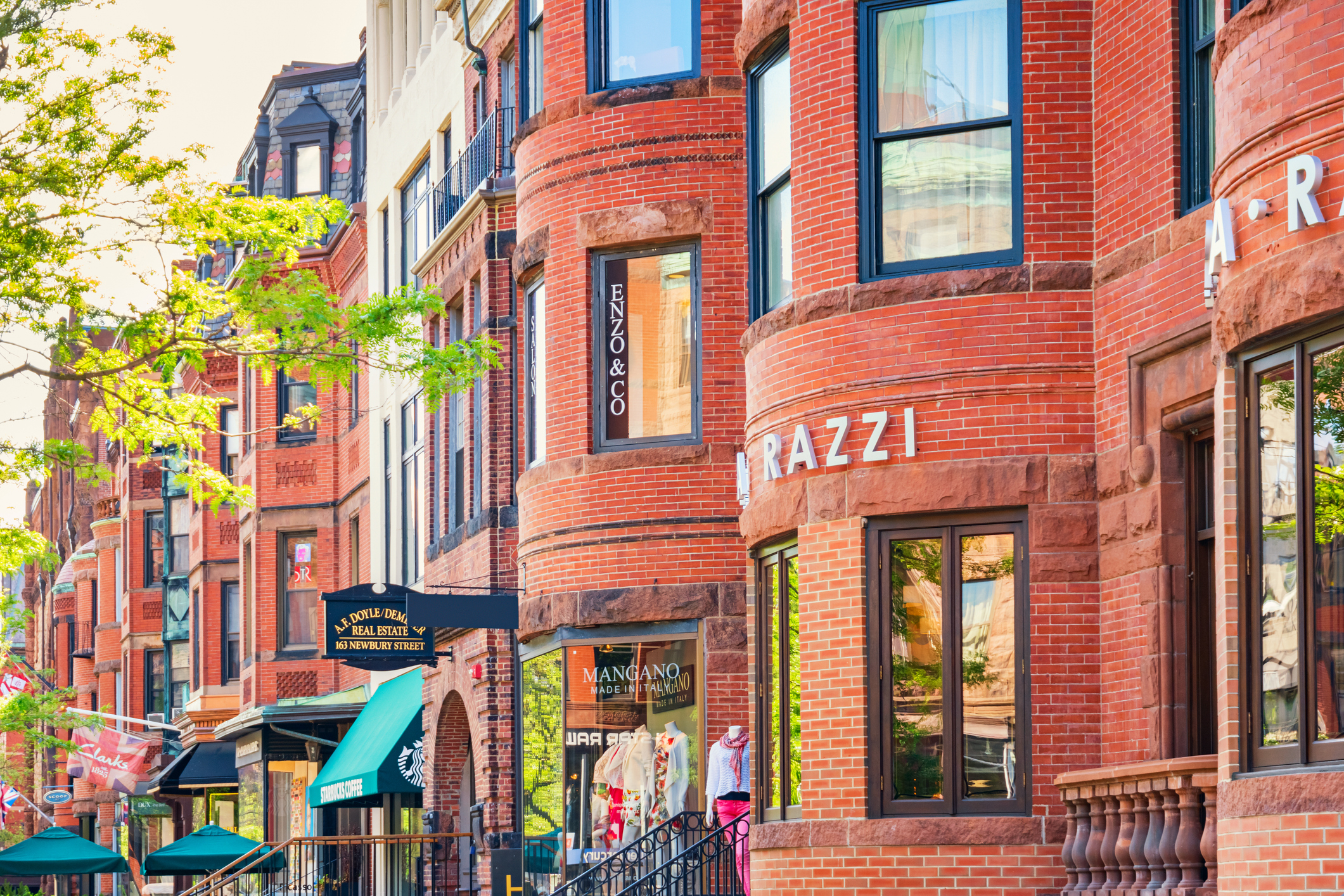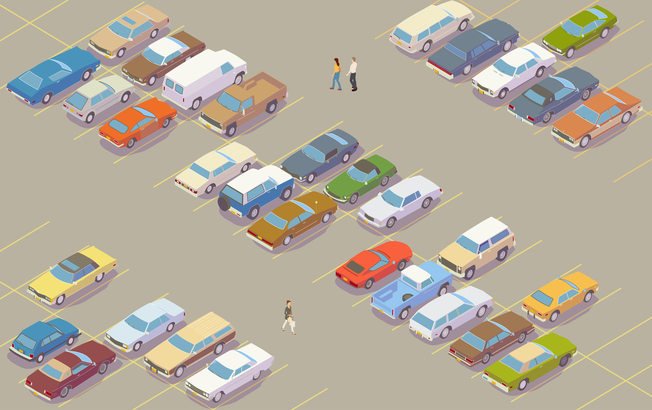
What is Mixed-Use Development? The Definition, Pros, and Cons for Renters

By Lilly Milman
Mar 27, 2024
If a walkable neighborhood, where everything and everyone is within reach, is your dream living situation, then read on — because you may be a good candidate for living in a mixed-use development. Most common in downtowns and on main streets, mixed-use properties combine the best of both real estate worlds: commercial and residential. In this guide, we explain what exactly they are, what the benefits are, and what the drawbacks are.
What is mixed-use development?
A mixed-use development is exactly what it sounds like: a single building with multiple purposes. This property type combines commercial uses with residential — so if you live in a mixed-use development, you may be sharing your apartment building with a retail store, coffee shop, doctor’s office, gym, or other commercial or office space.
What does an apartment in a mixed-use property look like?
There are two prevailing types of mixed-use developments.
Typically, a mixed-use building will have commercial space on the ground floor, with residential units on higher floors. Most often, there will be more residential space than commercial space. In many mixed-use buildings, there is a separate entrance for residents and commercial space customers.
Another possibility is that a mixed-use building that is not multiple stories will have commercial property like a retail space in the front and a residential space in the back.
Where can I find an apartment in a mixed-use building?
Mixed-use development is most common in urban areas, whether a city is large or small. Think: downtown areas, popular shopping stretches, and main streets. For example, there is plenty of apartments in mixed-use developments on Boston’s Newbury Street or throughout New York City.
If you’re looking to live in a mixed-use building, then you’ll need to find a neighborhood with mixed-use zoning in place. Local government determines whether or not an area in their city is zoned for commercial use, residential use, or mixed use. Not everyone agrees on whether mixed-use zoning is a net positive or negative for a neighborhood, and some prefer to keep homes separate from commercial spaces.
What are the pros & cons of mixed-use development?
Is an apartment in a mixed-use building right for you? Read on for pros and cons.
Pros
- Convenience. Because you’ll be living in a neighborhood that allows both commercial and residential spaces, you’ll likely be able to get anything you need without leaving your neighborhood. Say you have a laundromat downstairs or your favorite coffee shop; you’ll be able to head down without ever leaving your building. The ability to be in a very walkable community is one of the biggest pros of a mixed-use building.
- Exciting location. Since mixed-use development is most often found in a downtown or on a main street, you’ll be living right in the thick of things. Your apartment’s location will likely be walking distance to nightlife and restaurants, as well as your favorite stores. Plus, many feel a sense of community from being so close by to so many different small businesses and apartments.
- Proximity to public transit. Another benefit of mixed-use zoning is that it’s often located near public transportation options, so you’ll more likely than not be able to get around without ever needing a car. If cutting down on transportation costs or getting mostly everyone on foot is your priority, then occupancy in a mixed-use building may be perfect for you. (Added bonus for sustainability!)
Cons
- Noise. If privacy and peace and quiet are necessary for you, then you may not like living above the hustle and bustle of a main street. Think about your city and potential neighborhood’s nightlife: Do you live in a city that never sleeps or one that tends to go to bed early? If it’s the former and you’re worried about noise from all the foot traffic, think twice before renting an apartment in a mixed-use space.
- Price. The desirable location of an apartment in a mixed-use building can easily drive up its rent price — especially if it’s in a small area with limited housing. If you don’t want to cover the upcharge of living in a sought-after area, then consider moving slightly outside of a city’s downtown drag.
- Lack of parking. As we’ve said, neighborhoods zoned for mixed use are perfect for walking — but parking? Not so much. If having a car is a nonnegotiable for you, then budget in the fact that you may need to rent your own parking space elsewhere if you decide to live in a mixed-use building.
The Bottom Line
Mixed-use development is a big part of many American cities, most often concentrated in an urban hubs, downtowns, or main streets. Mixed-use real estate and zoning laws fell out of favor for a while, but in recent years, has renewed popularity. It gives renters an opportunity to live close to various retail stores, cafes, restaurants, and more — as well as public transportation. If you’re interested in being in a community that’s walkable and exciting, then consider renting an apartment in a mixed-use building. If a low-noise profile and privacy are more important, then you may be better suited to a more traditional residential building or apartment complex.
Top metro areas
Atlanta Metro Apartments
1,461 apartments starting at $690/month
Austin Metro Apartments
1,398 apartments starting at $522/month
Baltimore Metro Apartments
743 apartments starting at $500/month
Boston Metro Apartments
4,958 apartments starting at $650/month
Charlotte Metro Apartments
878 apartments starting at $475/month
Chicago Metro Apartments
3,421 apartments starting at $400/month
Dallas Fort Worth Metro Apartments
2,717 apartments starting at $400/month
Houston Metro Apartments
1,063 apartments starting at $450/month
Las Vegas Metro Apartments
1,107 apartments starting at $670/month
Los Angeles Metro Apartments
4,749 apartments starting at $700/month
Miami Metro Apartments
575 apartments starting at $1,025/month
Milwaukee Metro Apartments
804 apartments starting at $500/month
New York Metro Apartments
2,169 apartments starting at $945/month
Orlando Metro Apartments
1,001 apartments starting at $550/month
Philadelphia Metro Apartments
1,762 apartments starting at $450/month
Phoenix Metro Apartments
1,608 apartments starting at $700/month
Pittsburgh Metro Apartments
1,077 apartments starting at $500/month
Portland Metro Apartments
1,716 apartments starting at $695/month
Raleigh Metro Apartments
813 apartments starting at $575/month
San Antonio Metro Apartments
1,032 apartments starting at $450/month
San Diego Metro Apartments
1,537 apartments starting at $590/month
San Francisco Metro Apartments
1,749 apartments starting at $850/month
Seattle Metro Apartments
1,521 apartments starting at $525/month
Tampa Metro Apartments
1,042 apartments starting at $725/month
Washington Metro Apartments
722 apartments starting at $550/month


